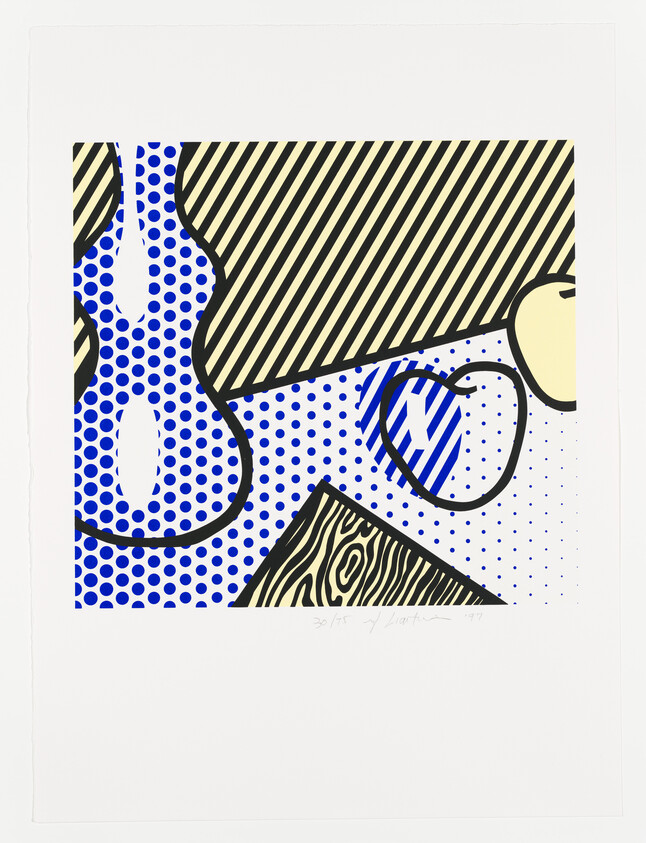Roy Lichtenstein, Little Big Painting, 1965
Apr 30, 2015
0:00
Roy Lichtenstein, Little Big Painting, 1965
0:00
Michael Lobel: What really interests me, what I find compelling about the painting is that he has found a way to have his cake and eat it, too.
Narrator: Michael Lobel is an art historian, and author of the book Image Duplicator: Roy Lichtenstein and the Emergence of Pop Art.
Michael Lobel: What Lichtenstein has given us is a kind of, set of images which look like the kind of painting that had been so recognizable to American audiences by the mid-1950s, called action painting or Abstract Expressionism. But it's an image of that work of course. It's a completely flat canvas. If you look at the surface of it, there's no kind of brush stroke there, there's no trace of the artists' hand there at all.
And there's that dot screen in the background of the painting, so we know this is a kind of work of art that makes reference to mechanical printing. And that was the last thing the Abstract Expressionists wanted. They resisted mass culture. They resisted this kind of culture that was produced by machines and reproduced endless times and disseminated and transmitted through the mass media.
At the same time that this looks like an image of an abstract painting, he's made a very successful kind of abstract painting with these wonderful tones of white and red and yellow. So he's doing both at once. He's able to parody the work of the generation that preceded him. But he's also found a way in that process, to make his own really powerful abstract composition.



